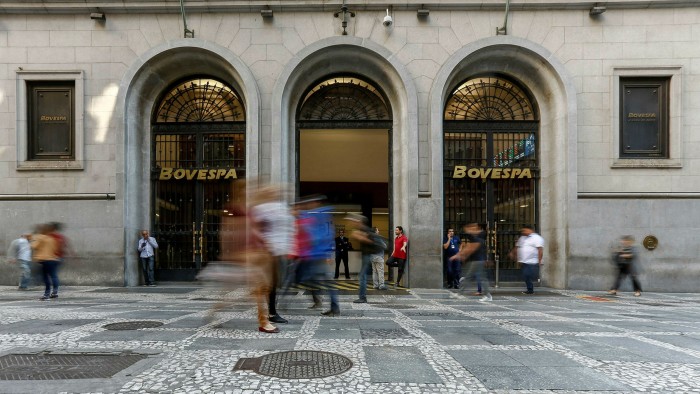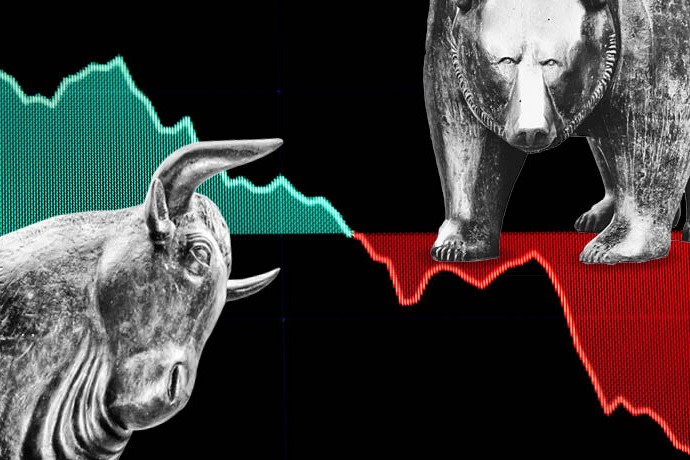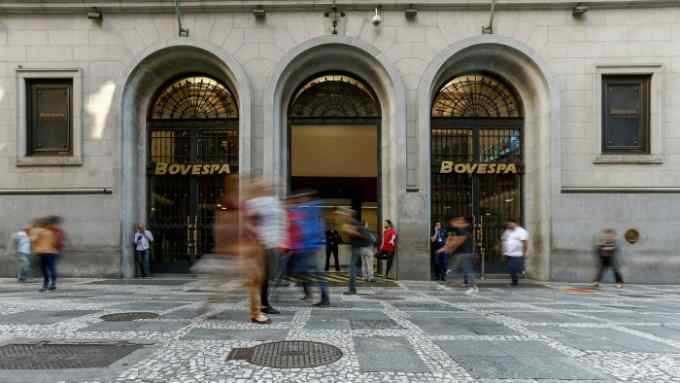BlackRock plans huge expansion in Brazilian ETF market

Simply sign up to the Exchange traded funds myFT Digest -- delivered directly to your inbox.
Interested in ETFs?
Visit our ETF Hub for investor news and education, market updates and analysis and easy-to-use tools to help you select the right ETFs.
BlackRock is planning to cross-list “up to 100” of its overseas exchange traded funds in Brazil to take advantage of a boom in investment sparked by plunging interest rates and market liberalisation.
The world’s largest asset manager said it hoped the ETFs would be available by the end of March next year, which would mark a huge expansion on its existing range of five São Paulo-listed ETFs.
There are only 19 equity ETFs listed in Brazil, even though the country is Latin America’s largest investment hub. Along with the rest of the region it has largely missed out on the ETF boom that has transformed the investment landscape in North America, Europe and parts of Asia.
The combined assets of ETFs with primary listings in Latin America amounted to just $11.1bn as of August, according to ETFGI, a consultancy, less than in 2012, even as global ETF assets have more than tripled to $7tn.
The total excludes cross-listings of US and European ETFs that have mushroomed in the likes of Mexico, Colombia and Peru, said Deborah Fuhr, founder of ETFGI, but is still an indicator of a market that has never fired on all cylinders.
However, market reforms look set to transform the ETF landscape in the region, especially in Brazil, where there are no cross-listed ETFs. In August, the financial regulator gave the go-ahead for the creation of locally listed Brazilian depositary receipts linked to overseas-listed ETFs, creating an easy mechanism for cross-listing the funds.
In addition, retail investors will be allowed to buy BDRs for the first time.
“We are probably going to see a boom linked to ETFs around the world,” said Alexei Bonamin, a São Paulo-based partner at law firm TozziniFreire Advogados.
“It’s a big pool of assets opening up in a very significant way, given they haven’t really had ways of investing outside Brazil before,” said Ms Fuhr.
“We think it’s a very positive thing for democratising the Brazilian securities market. There is an opening up, which is refreshing in a world that is seeing the opposite,” said Joe Hill, head of legal and compliance for Latin America at BlackRock.
“Previously you had to be the equivalent of an accredited investor. By cross-listing, we will not only continue to sell to institutional investors but we will also be able to access deep retail. Everybody in Brazil will be able to access these products. ”
Brazil’s fund industry has been held back by the country’s traditionally high interest rates. For decades, anyone with money in Brazil parked it in a bank for a generous risk-free return — more than 14 per cent a year as recently as 2016.
However, following a series of painful recessions, interest rates are just 2 per cent in nominal terms and negative in real terms, pushing investors into riskier assets such as equities and corporate bonds.
“We have the lowest interest rate ever in Brazilian history. It has forced investors, pension funds and asset managers to invest in alternative or equity assets because the returns can be higher,” Mr Bonamin said.
Fabiano Cintra, a fund specialist at XP Investimentos, a major Brazilian brokerage, said clients had traditionally favoured fixed-income investment, but this was changing.
“Adjusted for risk, double-digit rates were pretty good but this is no longer the reality. This is unprecedented in Brazil. It is forcing investors to shift to other asset classes,” he added.
“The home bias is extremely strong: over 99 per cent of our $1tn industry is in domestic assets, but these low rates are really reshaping the industry.”
BlackRock, which is already working with local partners to launch BDRs, said there had been “impressive growth” in individual investors in Brazil, with numbers tripling since 2018, according to the stock exchange.
ETF screener

Interested in finding out more? Our ETF Hub means in-depth data, news, analysis and other essential investment information is only one click away.
Creating a BDR based on a foreign-listed ETF is simpler and cheaper than a primary listing on the Brazilian exchange, so most managers will probably go down this route.
Mr Bonamin said he was in discussions with foreign groups looking for local partners to act as custodians for BDRs, with particular interest in thematic ETFs and funds based on environmental, social and governance investment.
Mr Cintra believed the potential market could be huge. Noting that in Chile 35 per cent of retail money is invested abroad, and that XP’s most aggressive model portfolio has a 37 per cent foreign allocation, he said that even if overseas investment “goes from 1 per cent to, say 5 per cent, there is a lot of money on the table”.
“We are talking about billions [of dollars of flows],” said Mr Bonamin. “It’s more about when it’s going to happen than if. Pension funds have to find returns or they are not going to pay the next generation.”

Click here to visit the ETF Hub

Comments